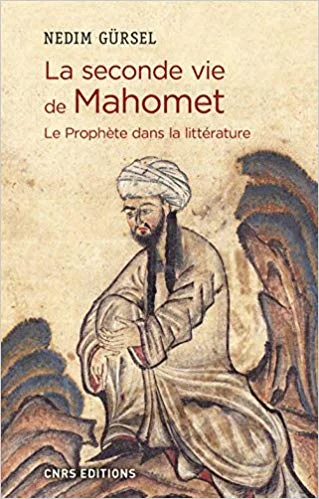THE SECOND LIFE OF MOHAMED: THE PROPHET IN LITERATURE
Nedim Gürsel
(C.N.R.S. Editions, 256 pages, 2018)
Legendary or not, historical or sacred, it is the narrative that, above all, feeds the imagination, and contributes to the dissemination of the image of the Prophet through time and space.
—Nedim Gürsel
The profusion of stories and myths surrounding the life of the prophet Mohamed make it difficult for historians and biographers to determine historical facts. Their task is made harder because it is often considered a religious offense to question his life except in the ways considered traditional. Stepping outside this fraught context, Nedim Gürsel, a Turkish writer, has turned to literature, retracing changing perceptions of Mohamed and of Islam over the centuries. He carves a space beyond devotion and vilification; a place where we can appreciate the life of Mohamed as depicted and imagined through a rich variety of written perspectives.
The second life of the Prophet of Islam begins with his death in 632 in the arms of Aïcha, his young wife. Mohamed’s life exemplifies, in the eyes of the faithful, the highest ideal for human conduct. By contrast, at the height of the Muslim conquest, Christian Europe saw in Mohamed an Antichrist and in Islam a heresy and a scourge sent by God. Gürsel shows how medieval literature, and its deeply prejudiced representation of Mohamed, would set the tone for centuries to come. Dante, for example, in his influential Divine Comedy, condemned Mohamed to the eighth circle of Hell. But by the twelfth century, the first translation of the Koran into Latin appeared in the monastic libraries of Europe. Western authors could turn directly to the source. Enlightenment-era writers like Voltaire and Goethe took a closer interest in Mohamed as a historical figure. They, and the Romantic poets who followed, recognized Islam as a universal religion, one that offered an alternative viewpoint from which they could reflect and reimagine their own world. In the twentieth century, Mohamed became a fictionalized character in the works of North African writers such as the Moroccan Driss Chraïbi, or the Algerian novelist Assia Djebar. Each evolution in the representation of Mohamed shows a broader, less restrictive view of the man and his life, and demonstrates the changing history of the relationships between the Christian and Muslim worlds.
Gürsel, once the subject of a blasphemy trial in Turkey, hopes that the knowledge of Mohamed through the prism of literature can brighten a horizon clouded by fanaticisms. He shares with Salman Rushdie the conviction that the power to determine the grand narrative of Islam must and should be shared by all. This courageous book is a celebration of the power of literature and imagination.
Nedim Gürsel is a Turkish writer. In 1976, he published A Summer Without End, a collection of stories for which he received Turkey’s highest literary honor, the Prize of the Turkish Language Academy. In 2008, Gürsel published The Daughters of Allah. This book prompted the Turkish authorities to charge Gürsel with blasphemy, but he was eventually acquitted. Gürsel is a founding member of the International Parliament of Writers and a recipient of the Freedom of Expression and Publishing Award. Today, a citizen of France, he teaches contemporary Turkish literature at the Sorbonne and works as research director in Turkish literature at C.N.R.S. He is the author of some forty novels, short stories, essays, and travel stories, including The Last Tram (Comma Press, 2012) and The Conqueror (Talisman House, 2010), which have been translated into English.

